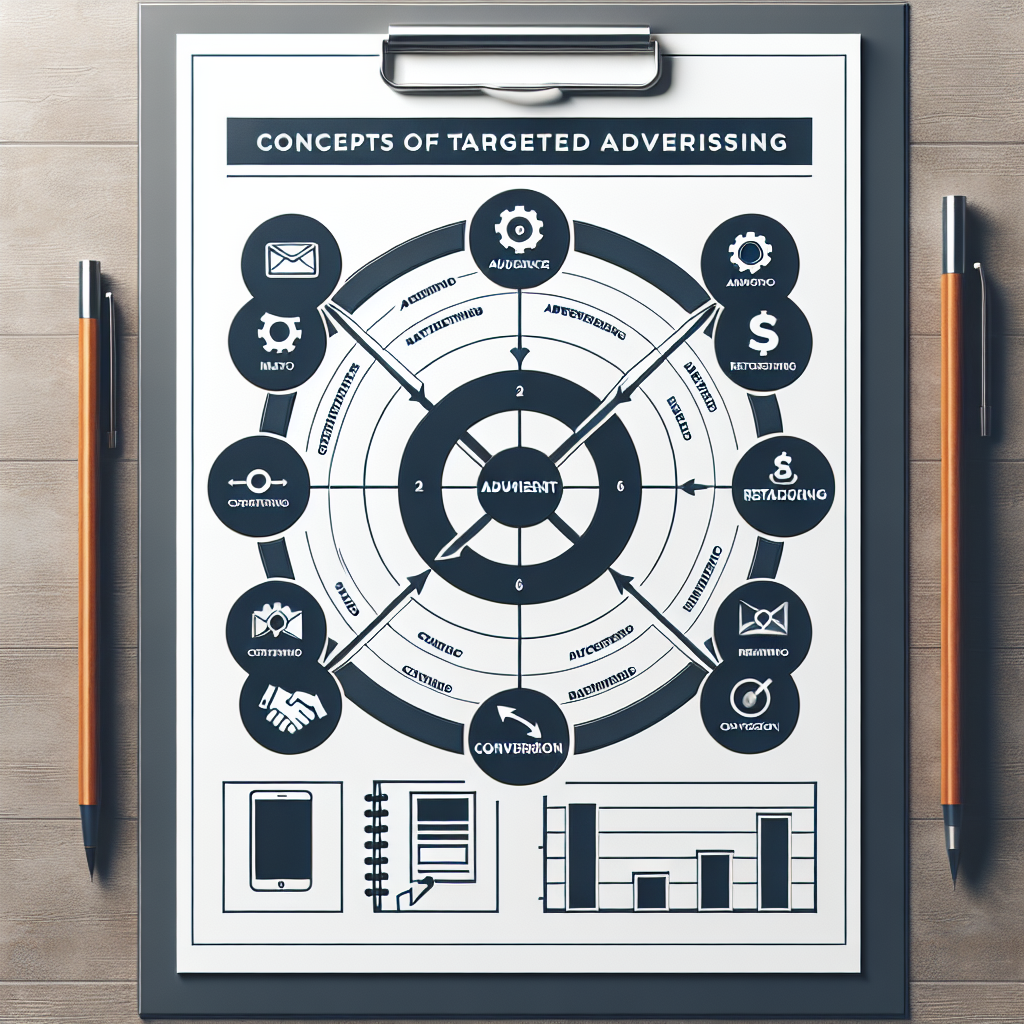
In todays digital age, understanding what is SMM targeting? is crucial for your businesss success. Simply put, SMM targeting allows you to reach specific audiences on social media platforms, maximizing your marketing efforts. Imagine running a bakery. Wouldn’t you want to showcase your delightful pastries precisely to the dessert lovers in your area? Thats the beauty of SMM targeting—it helps you focus on those who truly matter. ⭐
Statistics reveal that targeted social media ads have been shown to increase conversion rates by up to 300% compared to non-targeted ads. This means that grabbing attention in a crowded digital space is not just a challenge; it’s an ongoing game of precision. With the right targeting strategies in place, your business can flourish like never before.
Now, what is targeting in simple words? Its the process of identifying and reaching out to your ideal customer demographic efficiently. Instead of broadcasting your message to everyone, you tailor your marketing strategy to reach those most likely to convert. Think about it: how often do you scroll past ads on social media that dont speak to your interests? ⭐ By targeting your audience based on behaviors, locations, and preferences, you make sure that your message resonates.
When asking, what types of social networks are there?, you have several options to choose from. Heres a quick breakdown:
Picking the right platform is crucial for effective targeting, as each network appeals to different segments of the population. For instance, a fashion brand might get more interaction on Instagram, while a corporate service could thrive on LinkedIn.
Are you wondering how does SMM enhance targeted advertising? The answer lies in data analytics. Social media platforms gather vast amounts of data regarding user preferences, interactions, and behaviors. By leveraging these details, you can create campaigns that speak directly to specific target groups. ⭐⭐
For example, if you’re selling eco-friendly products, you can use platforms like Facebook to reach users who have shown interest in sustainability. Such customized marketing leads to higher engagement and conversion rates, which ultimately translates into increased sales.
Let’s take a look at a real-world example. One of our clients, a local coffee shop, was struggling to reach customers. By employing our SMM targeting strategies, they managed to connect with local coffee enthusiasts nearby, leading to a 40% increase in foot traffic within three months! Through targeted ads on Instagram showcasing their new offerings, they didnt just sell coffee—they sold an experience. ☕️✨
To better manage your SMM targeting efforts, consider these expert tips:
Incorporating these strategies into your SMM can help ensure that your business not only talks but also connects with its audience.
Our team at webmaster.md has over 20 years of experience in providing exceptional IT services including targeted social media marketing. With packages starting at just €859, we can help your business grow through effective SMM targeting strategies. Contact us today at +373 601 066 66 or visit our website to ensure you’re ahead of your competition! ⭐

When it comes to marketing, the term targeting is one of the most crucial concepts youll encounter. So, what is targeting in simple words? Imagine youre throwing a party. You wouldnt invite everyone in the neighborhood, right? You’d want to invite your friends and those who share your interests. Similarly, in marketing, targeting means identifying and focusing on a specific group of potential customers that are most likely to show interest in your products or services. ⭐
Using precise targeting helps businesses tailor their marketing strategies to meet the unique needs of their audience, ensuring that every marketing dollar spent is effective. This approach not only increases conversion rates but also builds better relationships with customers. How powerful is that? According to recent studies, targeted marketing campaigns can deliver 5 to 10 times higher ROI than non-targeted campaigns! ⭐
So why is targeting so essential? Here are some key points to consider:
For example, let’s say your business sells athletic wear. Instead of promoting your products to a general audience, you could target fitness enthusiasts aged 18-35 who regularly shop for gym gear. This focused effort ensures that your ads will reach those customers who would be genuinely interested in your products, leading to better results.
When we dive deeper into targeting, it can be broken down into various categories. Here are a few types:
With these types, businesses can craft messages that resonate much more strongly based on the audiences identity, location, purchase history, and psychographic profile. Each strategy works harmoniously within addressing unique segments of the market effectively.
Social media platforms have revolutionized the way we approach targeting. With tools and algorithms that analyze user behavior, marketers can build detailed profiles of potential customers. Gone are the days of casting a wide net and hoping for the best! Platforms like Facebook and Instagram allow you to hone in on your audience based on various factors, from their interests and activities to their social interactions. ⭐
This data-driven targeting has proven to significantly enhance marketing effectiveness. For example, our client—a small local restaurant—used targeted ads to reach food lovers within a 5-mile radius. As a result, they saw a 50% uptick in new customers visiting their establishment, driven by precise ads featuring popular menu items. ⭐️⭐
Targeting is all about precision! By successfully pinpointing your audience, you can tailor your marketing strategies to connect with them effectively. The benefits are immense, not just in achieving higher profits but also in building lasting relationships with customers. Curious to learn more about how effective targeting can transform your marketing efforts? Reach out to us at webmaster.md, where we specialize in harnessing the power of targeted marketing to help businesses like yours thrive! Call us at +373 601 066 66 or visit our website today! ⭐

When venturing into the realm of social media marketing, understanding the different types of social networks available is crucial for effective targeting. Each platform has its unique audience and features, which can make or break your marketing strategy. So, what types of social networks are there, and how can they help you reach your ideal customers? Let’s dive in! ⭐
Facebook is the king of social media, boasting over 2.8 billion monthly active users. Its broad demographic range allows businesses to reach almost any audience imaginable. From younger users to professionals and seniors, Facebook serves as a versatile platform for promoting your brand. Its powerful advertising tools let you target users based on interests, behaviors, and demographics. ⭐
For instance, a clothing brand could showcase its latest spring collection to fashion enthusiasts and local shoppers within their region, translating views into sales.
Instagram, with its emphasis on stunning visuals, is perfect for businesses that want to captivate users through images and videos. With over 1 billion active users, this platform appeals mainly to younger audiences, particularly those between ages 18-34. ⭐
An artisanal coffee shop can post mesmerizing images of their drip coffee or mouth-watering pastries that not only attract coffee lovers but also build brand loyalty.
For those who thrive on instant conversations and trend-based marketing, Twitter is your go-to platform. With its 330 million active users, companies can rapidly engage with their audience through tweets and hashtags. ⭐
A local gym could take advantage of workout hashtags to reach fitness enthusiasts in the area and share timely offers on memberships.
LinkedIn is tailored for B2B interactions, making it ideal for professionals, recruiters, and businesses targeting other businesses. With over 774 million users, this platform offers distinct advantages for companies in the professional sphere. ⭐
A software development firm can share case studies and successes, showcasing how their services can provide value to potential clients across various industries.
Pinterest is often underestimated, but it provides a unique visual discovery platform with over 450 million monthly users. It’s great for businesses in fashion, home decor, travel, and food, allowing users to pin images they love. ⭐
A DIY craft shop could post inspiring craft ideas and visually stunning end products that draw in creative minds and convert them into customers.
As the second largest search engine globally, YouTube is a crucial platform for video marketing with over 2 billion logged-in users a month. Businesses can engage audiences with storytelling and informative content. ⭐
A fitness brand might use YouTube to create engaging workout videos that not only inform users but also lead them toward purchasing fitness products showcased in the videos.
Ultimately, the key to effective targeting is understanding your audience and choosing the right social networks to reach them. Not all platforms will suit your marketing goals, so take the time to analyze where your target audience primarily resides.
Whether its crafting eye-catching Instagram posts, engaging in real-time Twitter conversations, or establishing yourself as a thought leader on LinkedIn, the possibilities are endless. Your choice should align with your brand’s image and your audiences preferences. The goal? To craft campaigns that cut through the noise and help you achieve substantial results! ⭐
At webmaster.md, we specialize in helping businesses navigate these platforms to leverage targeted social media strategies that drive engagement and conversions! Reach out to us at +373 601 066 66 or visit our website to learn how we can assist you in tailoring the perfect social media strategy for your needs today! ⭐

Social Media Marketing (SMM) has revolutionized the way businesses reach their customers through targeted advertising. But how does SMM enhance targeted advertising, and what are the key benefits you need to know? Let’s break it down! ⭐
One of the most significant advantages of SMM is its ability to allow businesses to target audiences with laser-like precision. Unlike traditional advertising, which casts a wide net, SMM enables marketers to refine their audience based on various factors:
For example, a local gym could run Facebook ads targeting users aged 25-40 within a 10-mile radius who have shown interests in fitness and healthy living. This approach increases the likelihood of engagement and conversions. ⭐
Traditional advertising methods, like print and television, often require a hefty budget without guaranteed returns. In contrast, SMM offers cost-effective advertising options tailored to fit various budgets. Here’s how:
For instance, a small e-commerce store can start with a modest ad budget on platforms like Instagram, optimizing ads based on performance without breaking the bank.
In the age of social media, users crave interaction. Unlike traditional media, where communication is one-sided, SMM allows businesses to engage directly with their audiences through comments, shares, and likes. This leads to:
For example, a pet supply store could host a giveaway contest on Facebook, asking users to share their favorite pet photos. This interaction not only boosts engagement but also increases brand visibility. ⭐
One of the most powerful aspects of SMM is the wealth of data it provides. Businesses can analyze user behavior and preferences to refine their marketing strategies. Key insights include:
A skincare brand might discover that video tutorials of their products perform better than still images, prompting them to shift focus to video content for better engagement. ⭐
Did you know that most users don’t convert on their first visit? SMM offers retargeting strategies that allow businesses to re-engage potential customers who have already interacted with their brand. Here’s how it works:
For instance, an online bookstore could retarget users who viewed specific books with tailored ads offering a discount, increasing the chances of conversion. ⭐
In conclusion, SMM enhances targeted advertising through precision targeting, cost-effective solutions, enhanced audience engagement, data-driven insights, and effective retargeting strategies. By harnessing the power of social media platforms, businesses can streamline their marketing efforts, reach their ideal customers, and ultimately drive conversions.
Are you ready to take your targeted advertising to the next level? Our team at webmaster.md specializes in SMM strategies tailored to your unique business needs! Contact us today at +373 601 066 66 or visit our website to learn more about our services! ⭐
Leaders in the IT market |
| 14+ years of experience and innovative solutions to help your business stand out and grow. |
Inspiring portfolio |
| 150+ successful projects: from sleek landing pages to complex corporate systems. |
Team of experts |
| 51+ professionals who bring your ideas to life with maximum efficiency. |

| NOTORIUM TRADEMARK AWARDS |
| Notorium Trophy 2017, Notorium Gold Medal 2018, Notorium Gold Medal 2019 |

| TRADE MARK OF THE YEAR |
| Gold Medal 2016, Gold Medal 2017, Gold Medal 2018, Gold Medal 2019 |

| THE BEST EMPLOYER OF THE YEAR |
| According to the annual Survey conducted by AXA Management Consulting - 2017, 2018, 2019 |